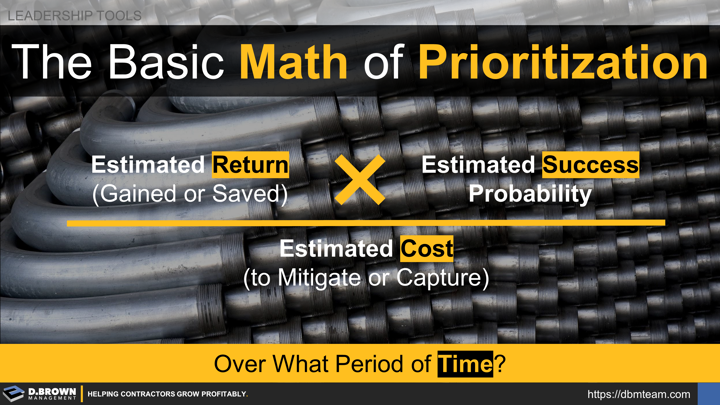Build your project, career, and business more profitably by continually allocating more of your resources to their "Highest & Best" use, focusing on prioritized probabilities rather than possibilities.
Set a big vision for what you ultimately want to accomplish. There is nothing more wasteful than effectively prioritizing how to reach the wrong goal.
Get the right people in the room to stretch each other. The right people and purpose sets the foundation for everything that will be achieved.
Develop a full range of possibilities with active brainstorming sessions. For teams, utilize the 5D Facilitation process. For high-leverage decisions, bring in outside expertise to stretch thinking.
Once you have developed the range of possibilities, force the discussions into prioritization and sequencing by using tools like PICK Charts and SMART Goals.
Remember that there are other factors to prioritize beyond financial when it comes to building true wealth in life.
Thinking in Bets: Making Smarter Decisions When You Don't Have All the Facts by Annie Duke

